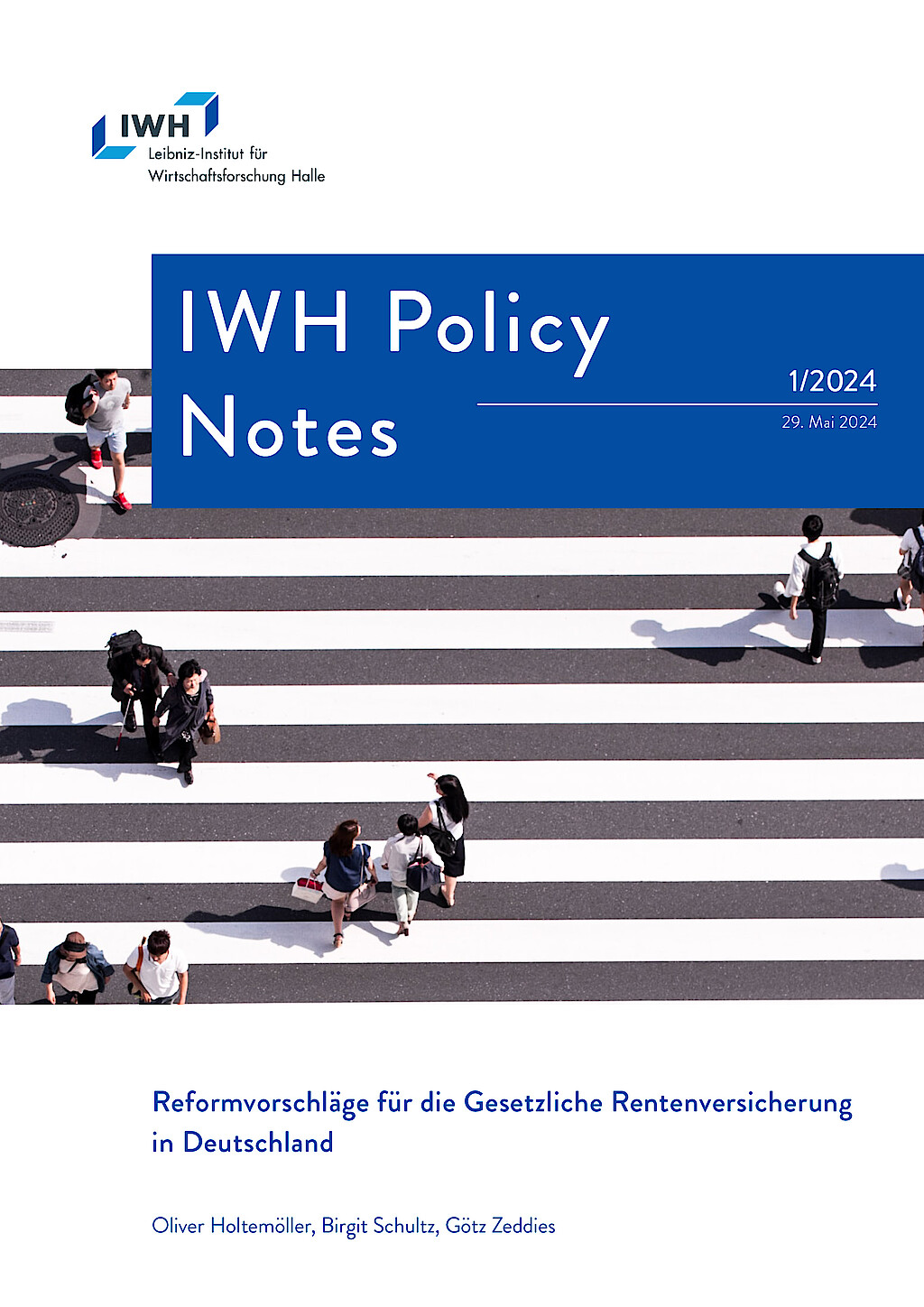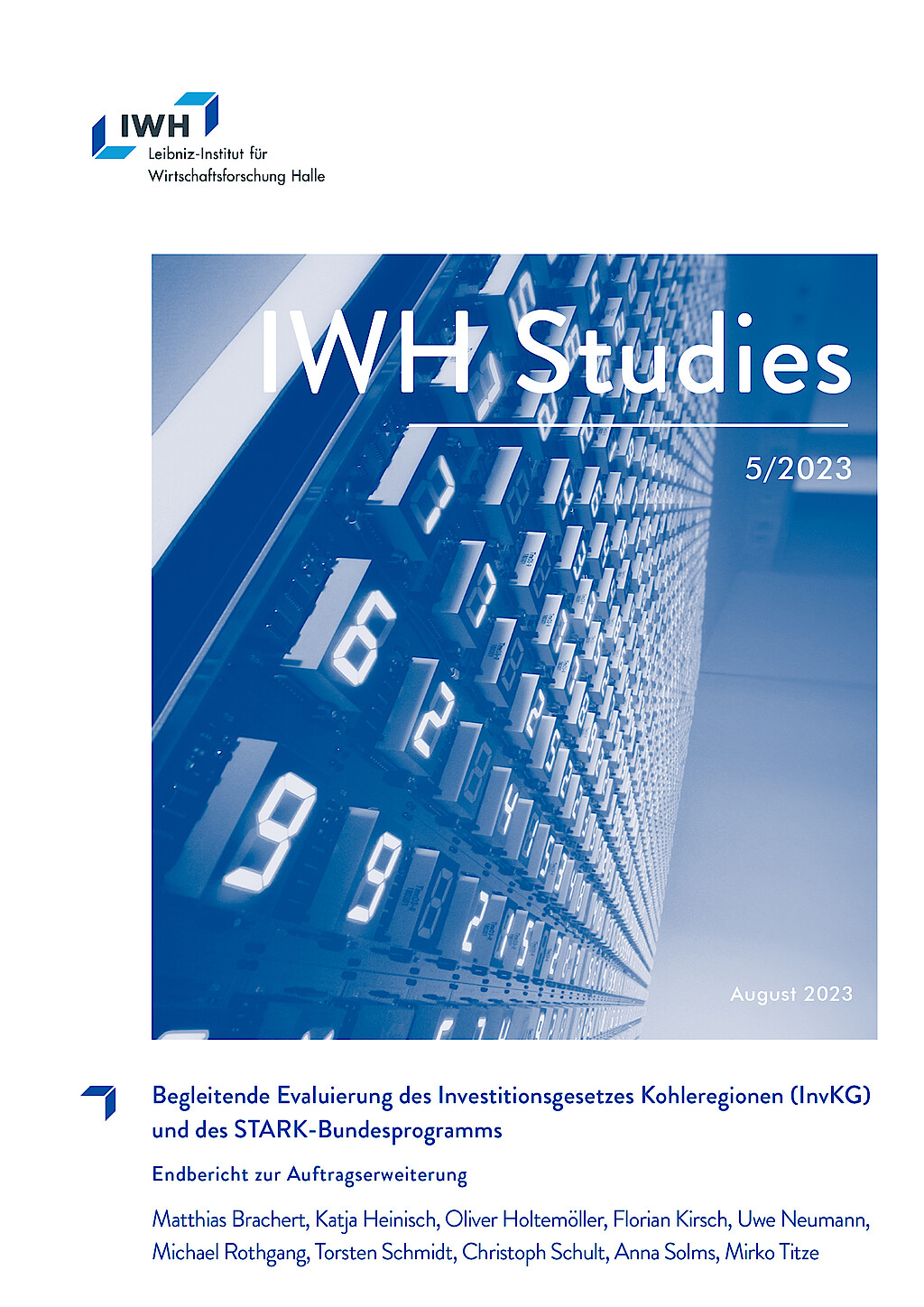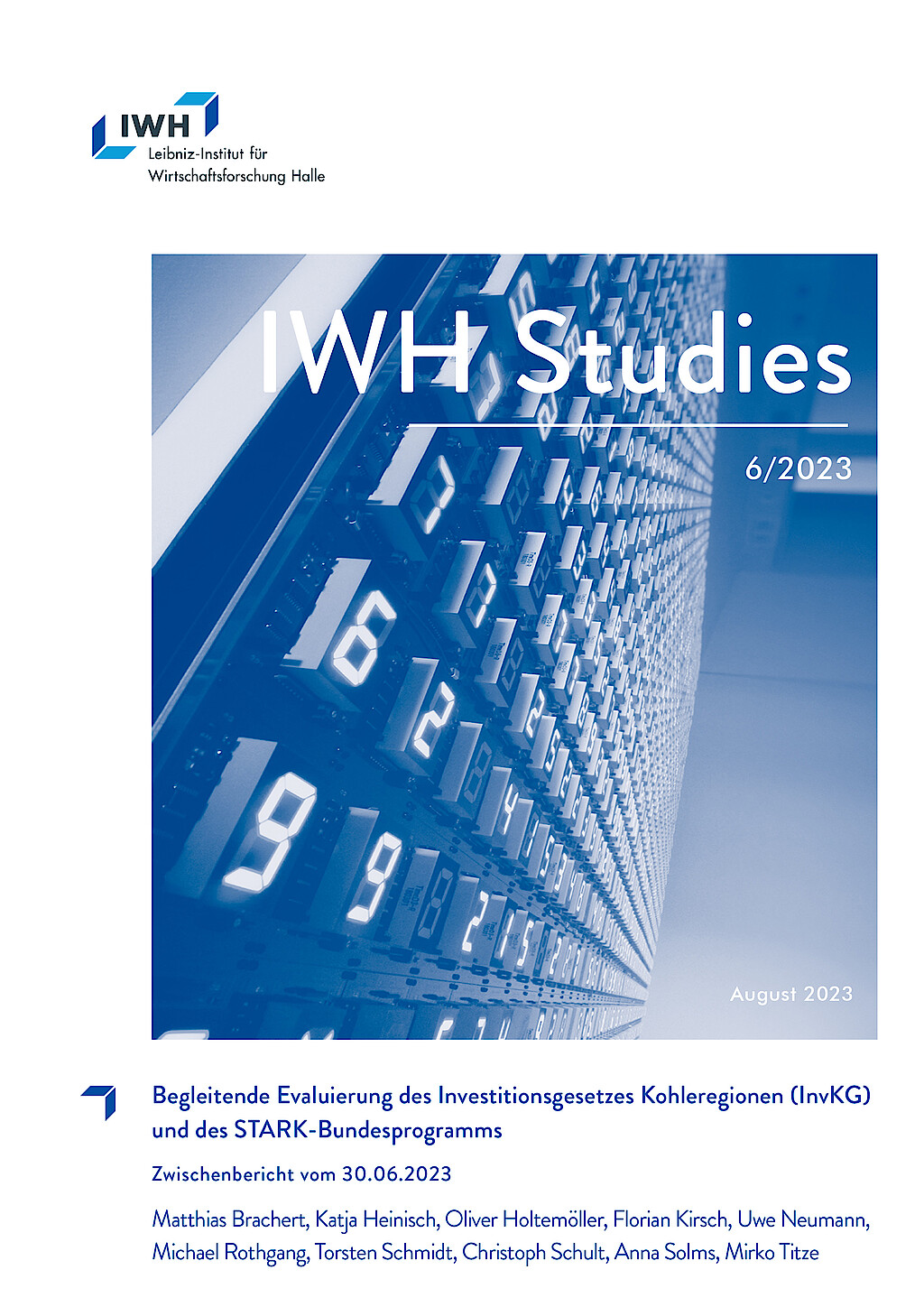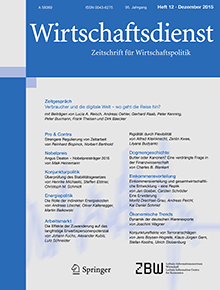
In a nutshell
Many thousands of refugees flocked to EU member states in 2015 and 2016, especially to Germany. As has been widely and controversially discussed. The much more serious and longer-term problem of demographic change has been adeptly sidestepped, however. Although it may sound unpopular to some: immigration is vital for Germany, as there is no other way to offset demographic change. This is because the population is constantly ageing and neither the labour market, municipal infrastructure investments, nor the German pension system are currently adequately prepared.
Our Expert

President
If you have any further questions please contact me.
+49 345 7753-700 Request per E-MailAll experts, press releases, publications and events on "Demographic Change"
Europe's century-long task
The increasingly ageing population is already high on the political agenda and will pose a major challenge for the next generation. If things remain as they are, today's children will have to pay much higher pension contributions than their parents and grandparents – and receive considerably less money in return when they are old. Although demographic change is considered when adjusting pensions, this is not sufficient to prevent the scenario just described. There are certainly alternatives, however, to the existing system. For instance, pension levels at retirement age could be fixed at current levels, or even slightly higher, and the pensions of those who have already retired only be increased in line with inflation. Living standards would therefore be maintained. On the other hand, people's work-life balance must be improved, so that couples are not afraid to have children. Almost 10 years ago, the IWH determined that women only continue to work part time after having children, particularly in western Germany.
Germany's towns are also paying too little attention to demographic change and thus the future. They primarily make investments based on the current financial situation and too little on how the population will develop in future. If towns continue to do this, some will be chronically under-funded and others over-funded in 20 years' time.
Another problem is the shortage of skilled workers. In order to make it attractive for well-trained specialists to move to Germany from overseas, a targeted immigration policy is required. The projects launched to date, such as Blue Card, have not been as successful as hoped. So Germany currently remains isolated from the international pool of highly-qualified workers. A points-based system could be a promising alternative.
At the same time, Germany is facing the huge humanitarian dilemma of refugees; the enormous wave of migration since 2015 is placing considerable demands on Europe. The asylum system in Europe still has major shortcomings. A coherent European asylum policy is currently more important than ever, but the refugees have been very unevenly distributed within Europe. The IWH mooted a strategy for their equitable distribution back in 2015, which takes into account both the allocation of people and the costs.
In addition, the state must sustainably manage the integration of newcomers into our culture and labour market. This also includes improving social mobility within our society, in order to provide immigrants with good training opportunities. "Germany has been asleep for the last ten years. We have not seriously considered how we will handle our population development in 15 years' time," says Reint Gropp, President of the IWH in an interview with Mitteldeutsche Zeitung.
Despite the intake of 1.2m refugees over the past two years, Germany’s population suffers a serious decline. Especially in Eastern Germany total population shrinks. According to the OECD, about half of asylum-seekers who started off in eastern Germany in the past moved to places such as Hamburg once they secured their permit.
Whether and how this country can make economic use of the opportunities presented by immigration is currently still under discussion. Integration is a fundamental part of this debate. Due to the complexity of the issue, an interdisciplinary, scientific approach, such as that of the ‘Crises of a globalised world’ Research Group, is essential, in order to understand the reciprocal mechanisms and dynamics. For example, analyses by the IWH show that measures to cope with immigration during late 2015 triggered additional economic impetus. National and regional governments increased their budgets, while spending on housing, food, medical care and general support for refugees fuelled demand and production, especially in the construction and hospitality sectors, as well as in professional services. According to calculations by the Joint Economic Forecast Project Group, migration-related expenditure across Germany contributed 0.1 percent to the growth in gross domestic product in 2015.
Today, one in 113 people in the world is considered to be a refugee – 65 million in total. In order to resolve the complex ‘asylum’ problem, politicians need to be much better organised and ideally develop collective actions. This is the only way to achieve a solution that is as efficient as possible – and above all humanitarian.
Demographic change is profoundly affecting various social spheres, yet is still underestimated by politicians and citizens. Pensions, future investments, migration – all these things are having a direct, immediate impact on people in Germany. Which is precisely why timely, sustainable solutions are required that do not simply pay lip service to sustainability.
Publications on "Demographic Change"

Reformvorschläge für die Gesetzliche Rentenversicherung in Deutschland
in: IWH Policy Notes, No. 1, 2024
Abstract
Politik und Gesellschaft verknüpfen mehrere verschiedene Ziele mit der gesetzlichen Rentenversicherung, nämlich die Sicherung des Existenzminimums im Alter, die Erbringung von Leistungen bei (teilweiser) Erwerbsunfähigkeit und die Sicherung des während des Erwerbslebens erreichten Lebensstandards im Alter. Aus ökonomischer Perspektive wäre es besser, für verschiedene Ziele auch verschiedene Instrumente einzusetzen. Sonst besteht die Gefahr von Zielkonflikten, insbesondere im Zusammenhang mit der effizienten Finanzierung der Leistungen. Im System der Sozialen Marktwirtschaften ist staatliches Handeln vor allem dann angezeigt, wenn Marktversagen besteht, der Markt ohne staatliche Eingriffe also nicht zu effizienten Lösungen führt. Dies ist im Bereich der Alters- und Invaliditätsvorsorge in unterschiedlichem Umfang gegeben. Eine gesetzliche Pflichtversicherung ist zur Absicherung des Existenzminimums im Alter sinnvoll, um Trittbrettfahrerverhalten und kurzsichtigem Handeln entgegenzuwirken. Dem Versicherungsprinzip folgend, sollte in diesem Fall eine Äquivalenz zwischen Beiträgen während der Erwerbsphase und Rentenzahlungen im Alter bestehen. Reichen die eigenen Beiträge zum Beispiel aufgrund von Krankheit nicht aus, um das Existenzminimum im Alter oder bei Erwerbsunfähigkeit zu gewährleisten, kommt das Fürsorgeprinzip zum Tragen; entsprechende staatliche Ausgaben sollten nach dem Leistungsfähigkeitsprinzip über Steuern finanziert werden. Bei der Sicherung des Lebensstandards im Alter liegt eine mildere Form des Marktversagens vor. Eine individuelle, private Vorsorge wäre hier grundsätzlich möglich und zielführend; allerdings wären finanzielle Anreize etwa durch Steuervergünstigungen oder staatliche Zuschüsse sinnvoll, um eine etwaige zu geringe Sparneigung auszugleichen. Die individuelle Vorsorge ließe sich grundsätzlich über freiwillige zusätzliche Beiträge zur gesetzlichen Rentenversicherung oder über privates Sparen realisieren. Hier könnte den Menschen ein eigenverantwortlicher Entscheidungsspielraum überlassen werden, um unterschiedlichen Lebensentwürfen Rechnung zu tragen. Die Vermischung der verschiedenen Aufgaben in der gesetzlichen Rentenversicherung trägt dazu bei, dass die Finanzierungslasten im Zuge des demografischen Wandels deutlich zunehmen werden. Das gegenwärtige System – auch zusammen mit den Vorschlägen aus dem Rentenpaket II der Bundesregierung – dürfte zu erheblich steigenden Rentenversicherungsbeiträgen und Zuschüssen aus dem Bundeshaushalt führen. Somit ist eine Dämpfung der Zunahme von gesetzlichen Leistungen nicht nur aus den oben genannten rentenspezifischen Effizienzgründen zu empfehlen, sondern auch um die Abgabenlast des Produktionsfaktors Arbeit nicht weiter steigen zu lassen und damit die Wettbewerbsfähigkeit der Unternehmen in Deutschland zu stärken sowie die Tragfähigkeit der öffentlichen Finanzen zu gewährleisten. Ansatzpunkte hierfür können das Renteneintrittsalter und der Umfang der jährlichen Rentenanpassungen sein. Im Gegenzug könnte die Förderung individueller Vorsorge verbessert werden, u. a. indem die Riester-Rente grundlegend reformiert wird. Ein Kapitalstock in staatlicher Hand ohne individuelle Ansprüche der Rentenversicherten birgt hingegen die Gefahr, dass er nicht hinreichend vor einer Zweckentfremdung durch zukünftige Regierungen geschützt ist, wenngleich die Schuldenbremse in ihrer gegenwärtigen Form dem in gewissem Umfang entgegenwirkt.

Begleitende Evaluierung des Investitionsgesetzes Kohleregionen (InvKG) und des STARK-Bundesprogramms. Endbericht zur Auftragserweiterung
in: IWH Studies, No. 5, 2023
Abstract
<b>Gutachten im Auftrag des Bundesministeriums für Wirtschaft und Klimaschutz </b><br /><br />Das vorliegende Kurzgutachten befasst sich mit der Analyse des aktuellen Standes der Maßnahmen des StStG. Ausgangspunkt für die Analysen stellt eine Auswertung der aktuellen Literatur zum Strukturwandel in den deutschen Kohlerevieren dar. Dieser Literaturüberblick zeigt, dass die Förderregionen im Geltungsbereich des StStG sehr unterschiedliche Voraussetzungen für eine erfolgreiche Bewältigung des Strukturwandels aufweisen. Dennoch sollten die Maßnahmen in allen Regionen an den wichtigen Determinanten des Wirtschaftswachstums ansetzen, wobei sie auf die Gegebenheiten der Regionen abgestimmt sein sollten. Dabei sind vor allem Investitionen als zentraler Bestimmungsfaktor für die langfristige wirtschaftliche Leistungsfähigkeit anzusehen. Diese setzen sich aus privaten Investitionen in Sachkapital, Ausgaben für Forschung und Entwicklung mit dem Ziel des technologischen Fortschritts, Ausgaben für Bildung zur Erhöhung des Humankapitals sowie Investitionen in den öffentlichen Kapitalstock, etwa die Verkehrsinfrastruktur, zusammen. Dabei werden langfristig Bildung und Forschung und Entwicklung als wichtigste Wachstumstreiber angesehen, an denen die Förderung des Strukturwandels entsprechend ansetzen sollte. Auch sollte das Augenmerk auf die Diffusion und den Transfer von Wissen und Technologien gerichtet sein. Kritische Anmerkungen weisen in die Richtung, dass vor allem Infrastrukturprojekte Unterstützung durch StStG-Mittel erhalten, die ohnehin durchgeführt worden wären und dass die Kommunen die StStG-Mittel als Erweiterung ihrer Haushaltsspielräume betrachten.

Begleitende Evaluierung des Investitionsgesetzes Kohleregionen (InvKG) und des STARK-Bundesprogramms. Zwischenbericht vom 30.06.2023
in: IWH Studies, No. 6, 2023
Abstract
<b>Gutachten im Auftrag des Bundesministeriums für Wirtschaft und Klimaschutz </b><br /><br />Das Klimaschutzgesetz (KSG) sieht eine Reduktion der deutschen Treibhausgasemissionen bis zum Jahr 2030 um 65 Prozent gegenüber den Emissionen im Jahr 1990 vor. Der Ausstieg aus der thermischen Verwertung der Kohle (vor allem der Braunkohle) leistet einen substanziellen Beitrag zum Erreichen dieser Ziele. Der Kohleausstieg stellt die Braunkohlereviere (und die Standorte der Steinkohlekraftwerke) jedoch vor strukturpolitische Herausforderungen. Um den Strukturwandel in diesen Regionen aktiv zu gestalten, hat der Bundestag im August 2020 mit Zustimmung des Bundesrats das Strukturstärkungsgesetz Kohleregionen (StStG) beschlossen. Über dieses Gesetz stellt der Bund bis zum Jahr 2038 Finanzhilfen von 41,09 Mrd. Euro zur Verfügung. Im Fokus der Politikmaßnahmen stehen verschiedene Ziele, vor allem gesamtwirtschaftliche (Wertschöpfung, Wachstum, Steueraufkommen), wettbewerbliche (Produktivität), arbeitsmarktpolitische (Beschäftigung, Beschäftigungsstrukturen), verteilungspolitische (regionale Disparitäten) sowie klimapolitische (Treibhausgasreduzierung, Nachhaltigkeit). Die im StStG vorgesehenen strukturpolitischen Interventionen umfassen ein breites Maßnahmenbündel. Das Gesetz regelt auch die Berichtspflichten der Bundesregierung gegenüber Bundestag und Bundesrat. Diese beinhalten insbesondere die wissenschaftliche Evaluierung des Gesetzes in einem zweijährigen Zyklus. Bei dem vorliegenden Bericht handelt es sich um das erste Dokument in dieser Reihe. Der aktuelle Bericht fokussiert sich dabei insbesondere auf die im Rahmen des Investitionsgesetzes Kohleregionen (InvKG) und des STARK-Bundesprogramms geplanten Maßnahmen sowie die vorläufige Bewertung ihrer möglichen Effekte. Angesichts des Programmstarts im Jahr 2020 und einer fast zwanzigjährigen Laufzeit des Programms kann der Bericht allenfalls einen ersten Zwischenstand wiedergeben. Viele Maßnahmen haben noch nicht oder gerade erst begonnen. Die hier vorgelegten empirischen Analysen basieren auf dem Datenstand vom 31.12.2022. Es ist vorgesehen, den Bericht in einem jährlichen Rhythmus zu aktualisieren und zu erweitern.

Entwicklung der öffentlichen Gesundheitsausgaben
in: Wirtschaftsdienst, No. 6, 2023
Abstract
Die sozialen Sicherungssysteme in Deutschland basieren auf dem Umlageverfahren, bei dem die Ausgaben der Sozialversicherungen in der laufenden Periode durch Einnahmen aus Beiträgen, die auf die Einkommen der abhängig Beschäftigten erhoben werden, gedeckt werden. Vor dem Hintergrund des demografischen Wandels, der in den kommenden Jahren immer stärker zum Tragen kommen wird, wird häufig die Nachhaltigkeit der umlagefinanzierten sozialen Sicherungssysteme hinterfragt, weil sich das Verhältnis von Beitragszahlern und Leistungsempfängern ändern wird. Dies dürfte sich zwar vor allem bei der gesetzlichen Rentenversicherung auswirken, aber auch bei der gesetzlichen Kranken- und der Pflegeversicherung.

Where STEM Graduates Stem From? The Intergenerational Transmission of Comparative Skill Advantages
in: VoxEU, Juni 2023
Abstract
The standard economic model of occupational choice following a basic Roy model emphasizes individual selection and comparative advantage, but the sources of comparative advantage are not well understood. We employ a unique combination of Dutch survey and registry data that links math and language skills across generations and permits analysis of the intergenerational transmission of comparative skill advantages. Exploiting within-family between-subject variation in skills, we show that comparative advantages in math of parents are significantly linked to those of their children. A causal interpretation follows from a novel IV estimation that isolates variation in parent skill advantages due to their teacher and classroom peer quality. Finally, we show the strong influence of family skill transmission on children’s choices of STEM fields.



